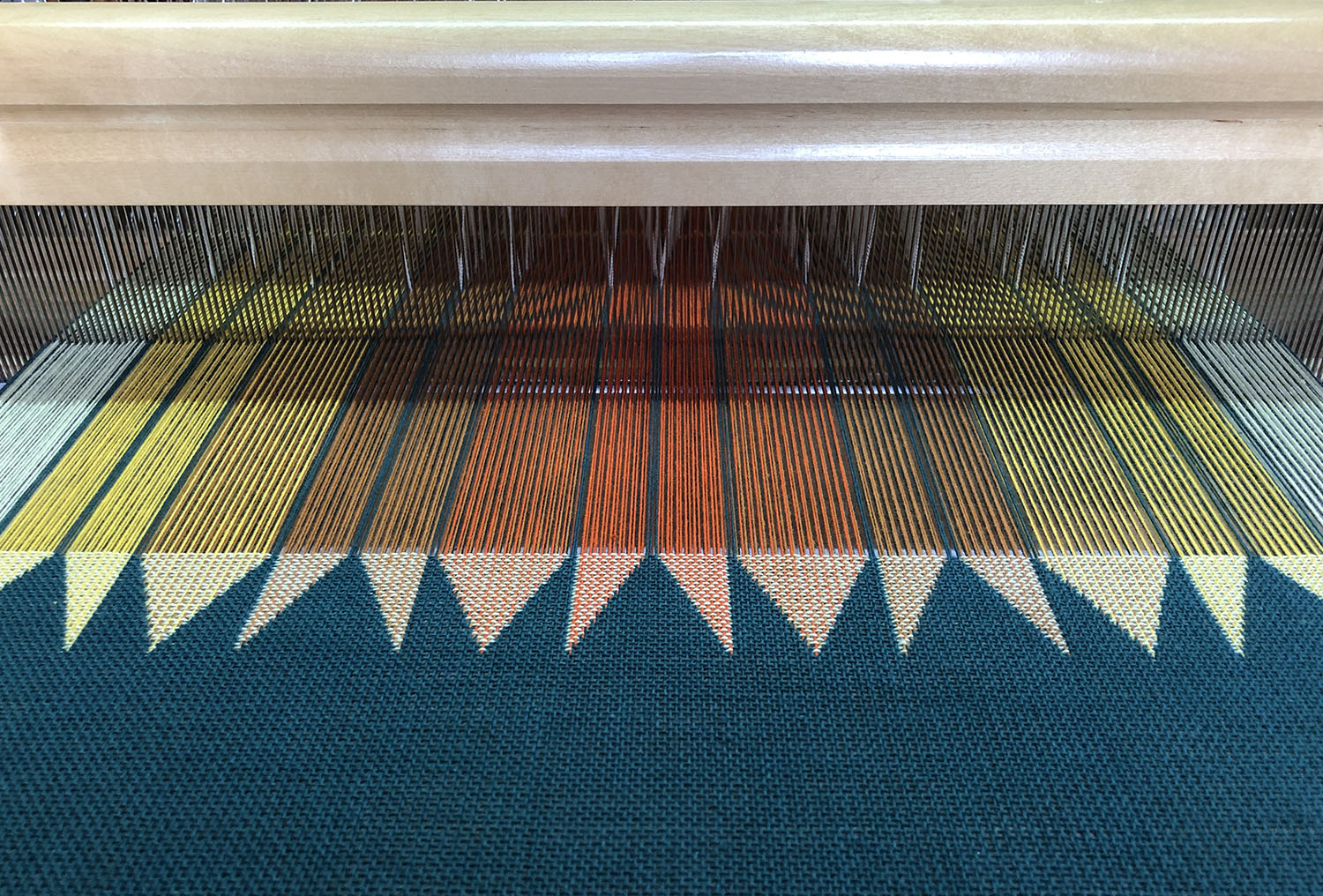Properties & Qualities
Application
Art
Qualities
2D, Colourful, Flexible, Smooth, Textured / tactile
Colour
Green, Orange, Yellow
Sample Information
Date of creation
11/02/2021
Dimensions
61 cm (H) x 46 cm (W) x 1.5 cm (D)
Culture & Context
Double-weave, in its most general sense, is a process of weaving two layers of cloth simultaneously. The interchange of these layers allows the weaver to create complex structures and patterns. Double-woven fabric dating back to the first millennium BCE has been found in Peru and in China. From these centres, knowledge of the structure spread around the world and has given rise to many different traditions of its use. In the UK it is perhaps best known in the form of Welsh ‘tapestry’ blankets, the double-layer structure being an excellent insulator.
Process & Production
This piece is handwoven in organic cotton using double weave techniques. The exchange of layers and the placement of colours are the raw ingredients of the weave, and they are transformed into an exploration of movement and rhythm.
Credits
Craft Maker
Cally Booker
Library Contributor
Cally Booker
Photographer
Stuart Booker, Cally Booker



















